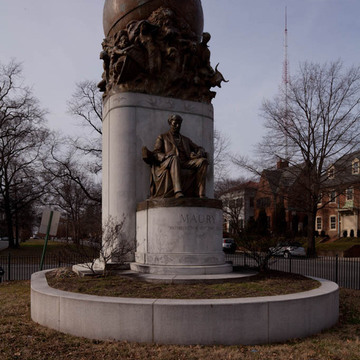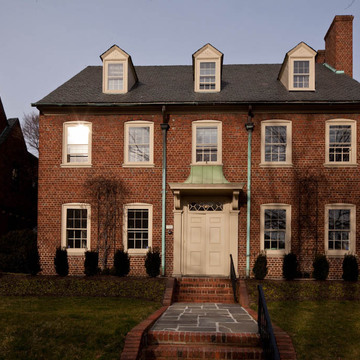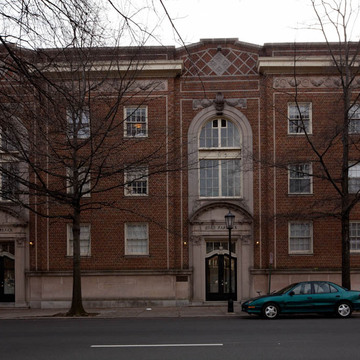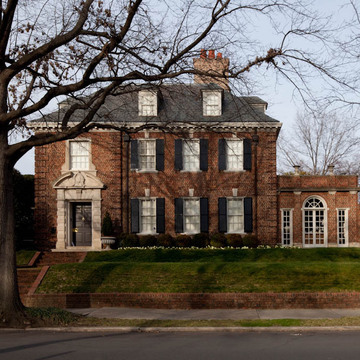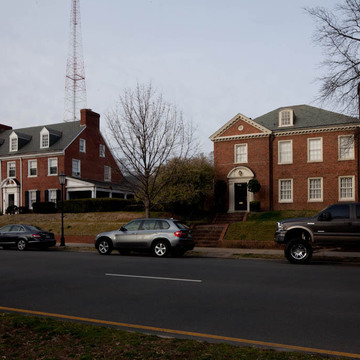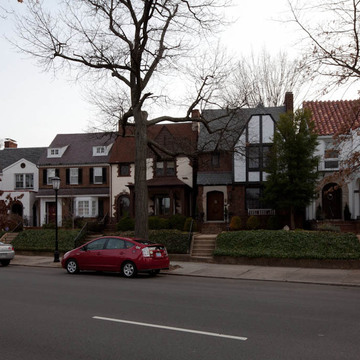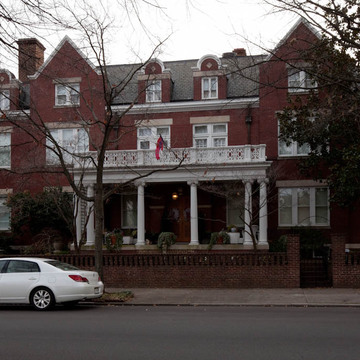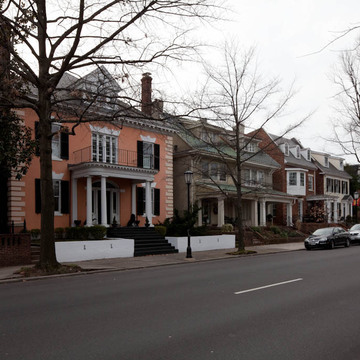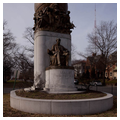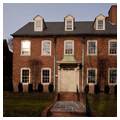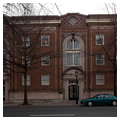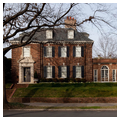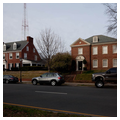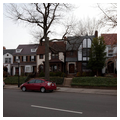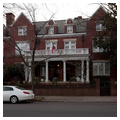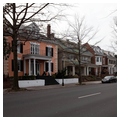The Matthew Fontaine Maury Monument was located at the intersection of Belmont and Monument avenues. It was designed between 1922 and 1929 by F. William Sievers, the Richmond-based sculptor who had completed the Jackson Monument a decade earlier. Maury represented the Confederate States diplomatically abroad and performed experiments on torpedoes for the Confederacy, but his inclusion on Monument Avenue also rose from Maury's international fame as an oceanographer and meteorologist. He was depicted as a man of ideas, seated beneath a globe, dramatically framed by two scenes, one of a shipwreck and the other of a storm on a farm. These illustrated Maury's concern for the impact that weather and the oceans can have on the peoples of the world. Details included salt- and freshwater creatures along the base and diagrams of the wind currents mapped by Maury. These contributions notwithstanding, it was Maury’s activities in support of the Confederacy that prompted his statue’s removal from its base on July 2, 2020 during the summer of anti-racism protests that took place across the United States in the aftermath of the murder of George Floyd. The base was removed in early 2022.
A Beaux-Arts classical apartment building dominates the corner behind the Maury Monument, the Lord Fairfax (1923, Lindner and Phillips; 3101–3115 Monument Avenue). Designed to fill a triangular lot, it contrasts in its understated detail with the row of urban cottages that completes the block, the Mayo Cottages (1926, Carl M. Lindner; 3117–3133 Monument Avenue). Jeanette A. Mayo commissioned the entire row. Across the street is another block dominated by the designs of one architect, W. Duncan Lee. He designed four of the six houses—all of them Colonial Revival: the Raab House (1924, 3100 Monument Avenue), the Schwarzschild House (1927, 3114 Monument Avenue), the Lewis House (1923, 3142 Monument Avenue), and the Anderson House (1922, 3170 Monument Avenue). The north and south sides of the 3100 block combine all the elements that transform the rhythm of Monument Avenue after it crosses the Boulevard: a large apartment building, a row of cottages, and a block faced with luxurious houses of horizontal proportions on wide, irregular lots.
The north side of the street for the next two blocks is dominated by large houses, built in the 1920s and 1930s, on wider lots. The south side of the 3200 block begins with an oddly shaped house (1910–1911, Carneal and Johnston; 3201 Monument Avenue), once the home of James Branch Cabell, a controversial early-twentieth-century author. In 1910–1911 Carneal and Johnston designed the eclectic, eccentric house, which at the corner is only about 8 feet deep. That block is completed by another row of cottages in the form of a double house and three pairs of single-family houses constructed by Davis Brothers, all built between 1919 and 1923.

